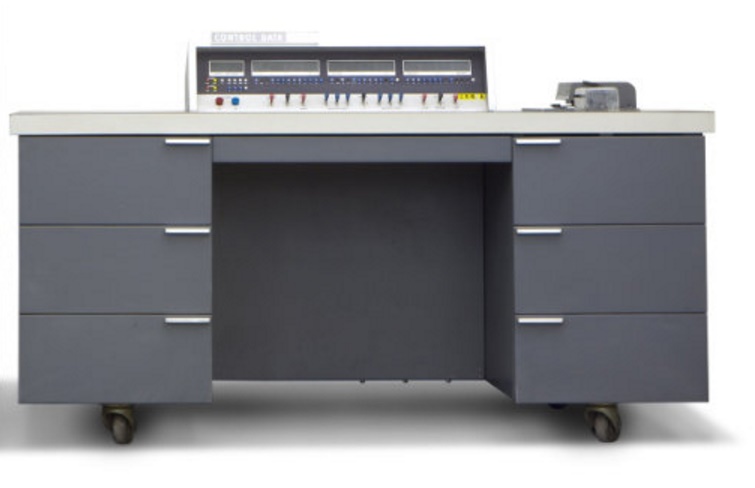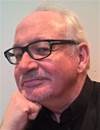Preamble
The Australian Computer Society (ACS) was formed 50 years ago, when the various state computer societies joined forces.
To mark the occasion, the ACS has initiated a heritage project to honour the many individuals who have contributed to the growth of the ICT profession in Australia.
At the heart of the project is a history of computing in Australia. It is not just a history of the ACS, but the history of a profession.
Australia has the longest computing history of any country, excepting the US and the UK, and CSIRAC in the Museum of Victoria is the oldest computer still in existence.
Chapter 12: Control Data Australia (part I)
US company Control Data was a major player in the early years of computing. It was especially important in Australia.
Control Data Corporation was founded in Minneapolis, Minnesota in July 1957. Its CEO was William Norris, and an early employee was Seymour Cray, one of the most influential and best known early computer designers.
The company grew out of Engineering Research Associates (ERA), a company formed after World War II to keep together the team that had worked on the US Navy’s code-breaking machines during the war.
ERA was sold to Rand in 1952 in, and after that company was acquired by Sperry in 1955, Norris -- who had been one of the founders of ERA -- and some of his associates decided to go out on their own.
Control Data Corporation
They started a company called Control Data Corporation (CDC) to build small computers and peripherals.
The company’s first computer was the Model 1604, released in 1959. It was a transistorised redesign of the 1103 that ERA had built for the navy, which was a valve-based machine, and the first ever designed by Seymour Cray. The ERA 1103 subsequently became the basis of the UNIVAC 1103A after Sperry acquired Rand.
The 160A was a smaller version of the 1604. It was sometimes regarded as one of the first minicomputers, because it was built as a standard office desk. Three of these were to come to Australia.
But the mainstay of CDC’s product line during the 1960s was the 3000 series.
The 3000 series machines were divided into ‘upper’ and ‘lower’ class machines. The larger 3400, 3600 and 3800 models used 48-bit words, and the smaller 3100, 3200 and 3300 models used 24-bit words. The instruction sets were identical, so the same programs could run on all machines. They all used magnetic core memory.
The lower end models were introduced specifically to meet the Australian market, after CDC’s local representative Trevor Robinson persuaded the company that he could sell at least a dozen in Australia, which he managed to do.
The 3000s were the most advanced commercially available computers of their era, and particularly suited to scientific work. Seymour Cray initiated the original designs, but in 1962 he moved into a purpose-built laboratory in his home town of Chippewa Falls, Wisconsin, a hundred miles from Minneapolis.
There, he worked on the 6000 series, widely regarded as the first supercomputer. He liked to work in isolation, and even William Norris, the head of the company, could only visit his lab by invitation.
The 3000 and 6000 series machines were extremely popular and cemented CDC’s reputation as a technology leader in the early days of commercial computing. They also established Seymour Cray’s position as the world’s leading computer designer – the ‘father of supercomputing’.
He left CDC in 1972 to form Cray Research Inc. to successfully build his own supercomputers. He died a month after being badly injured in a car accident in 1996, aged 71.
Trouble ahead
CDC ran into trouble in the late 1960s. The development of the 6000 series was hugely expensive, and after it was released, IBM slowed its sales by announcing a competitor, as part of its System 360 series, called the 360/92.
The IBM machine did not exist, except on paper, but the promise of it affected CDC so much that in 1968 it sued IBM, claiming that it has announced the machine before it was anywhere near being released, specifically to stop people ordering CDC’s machines.
CDC won the case in an out-of-court settlement, but not until 1973. In the meantime, IBM’s System/360 and System 370 had become the de facto standard for corporate computing. CDC had lost momentum.
CDC announced the 6600’s successor, the 7600, in January 1973, which led to the Cyber series of machines in the 1970s and 1980s.
But it was rushed to market and was unreliable. CDC was living off its reputation, and its reputation suffered. Losses mounted as it was unable to compete against Cray in supercomputers, IBM in the commercial world, and the new breed of minicomputers from the likes of Digital Equipment Corporation and Data General.
In 1989, CDC exited the hardware industry to concentrate on services. But its various divisions were acquired by other companies and in 1992 it ceased to exist entirely.
Control Data Australia
The story of the rise and fall of Control Data Australia (CDA) in many ways mirrors that of the parent corporation. CDA was a very influential vendor in Australia in the 1960s, second only to IBM. In government, research and education it was number one.
The CDA story starts on 1 January 1962 when E.L. Heymanson & Company became Australian distributor for CDC. The company had been founded in 1938 by Ernest Heymanson, from a family of prominent Melbourne businessmen.
During World War II it became involved in aviation, with extensive facilities at Moorabin Airport, and by the 1950s its main business in Australia was representing US aeronautical company Lockheed Corporation.
But Ernest Heymanson believed that Lockheed would have trouble competing in the commercial space after Boeing and Douglas introduced the first jet airliners in the late 1950s. He decided to diversify into computers, and became the Australian distributor for Ramo-Wooldridge (which became TRW) and car radio and computer company Philco (which was to be acquired by Ford).
In 1961, Heymanson hired Trevor Robinson to manage the company’s computer marketing activities. It was a decision which was to have a significant effect on the course of the Australian computer industry.
The CDA story continues next week.
Previously published:
Chapter 1 -The start of Australia’s computing history
Chapter 2: The first Australian Computer Conference
Chapter 3: Harry Messel and the birth of SILLIAC
Chapter 5: SILLIAC and the Snowy Mountains Scheme
Chapter 8: Australia's Computer Industry in 1962
Chapter 9: Australian made, Australian designed
Chapter 10: Five Computer Societies
Chapter 11: The Australian Computer Society
Veteran ICT journalist Graeme Philipson is researching and writing the Heritage Project book, which is due for release on the 50th anniversary of the formal incorporation of the ACS, on 3 October 2017.
The project also involves the creation of a ‘virtual museum’, cataloguing hardware and other artefacts, and collecting and curating documents on the history of the industry, including oral histories of as many people as possible.
Please get in touch with Graeme if you would like to contribute, at [email protected]
Do you have early memories of the ICT industry in Australia? Help us make history by sending us your story! Record or write your memories to be included in our historic ACS Heritage Project. Details here.










